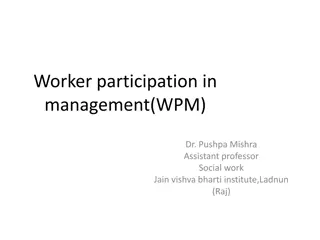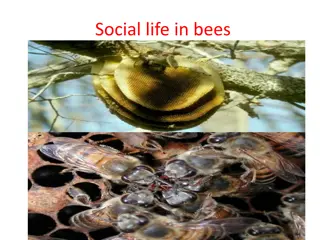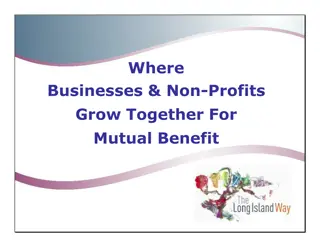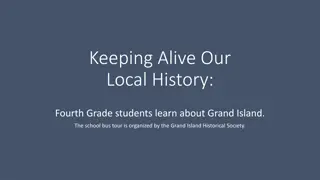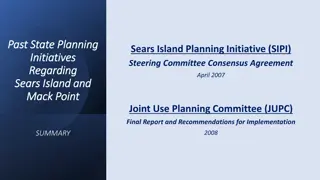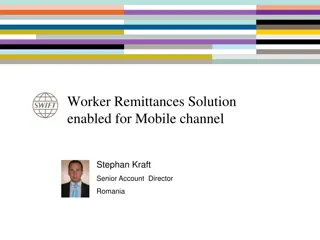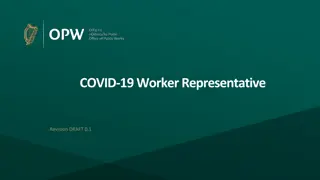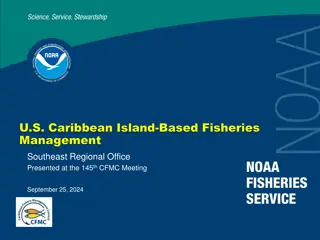Community Health Worker Initiatives on Long Island: Enhancing Public Health Engagement
Explore the role of Community Health Workers (CHWs) as frontline public health professionals on Long Island. Learn about CHW program models, job titles, assessment findings, and key informant interviews highlighting the importance of shared lived experiences and minimum eligibility requirements for hiring CHWs.
Download Presentation

Please find below an Image/Link to download the presentation.
The content on the website is provided AS IS for your information and personal use only. It may not be sold, licensed, or shared on other websites without obtaining consent from the author. Download presentation by click this link. If you encounter any issues during the download, it is possible that the publisher has removed the file from their server.
E N D
Presentation Transcript
Community Health Worker Planning on Long Island HEALI MEETING WEDNESDAY, OCTOBER 19
What is a CHW? According to the National Association for Community Health Workers: Community Health Worker is an umbrella term and includes community health representatives, promotores, peers and other workforce members who are frontline public health professionals that share life experience, trust, compassion, cultural and value alignment with the communities where they live and serve.
CHW Program Models Promotora de Salud/Lay Health Worker Model: CHWs are members of a target population with specialized training to provide health education Member of Care Delivery Team Model: CHWs work alongside medical professionals to address health issues Care Coordinator/Manager Model: CHWs help patients with complex health conditions navigate healthcare systems Screening and Health Educator Model: CHWs deliver screenings and health education to a target population Outreach and Enrollment Agent Model: CHWs are responsible for providing outreach and enrollment to a target population Community Organizer and Capacity Builder Model: CHWs promote community action and build community support for new activities
Community Health Worker Assessment Initial Survey 42 respondents began survey or completed portions of the survey 23 out of 42 (55%) have employed CHWs All respondent programs still active 22 out of 23 participants responded to the second question. The majorities were split between all full-time or, mostly FT, and some PT, or all part-time. Reason for not employing CHWs were mostly the lack of funding (50%) and 6.25% said they did not see the need Shared lived experience (23%) and Diploma/ GED (26%) were the highest responses for minimum eligibility requirements for hiring CHWs and none selected for Graduate degree Peer educator and community outreach worker were the commonly used titles among the organizations for their CHWs and none had Maternal/ Infant Health outreach specialist
CHW Job Titles CRPA Case manager Peer specialist Community Educator Health Liaison Foster Parent Advocate Peer Recovery Coach Family Peer Advocate Youth Peer Advocate
Key Informant Interviews Completed 8 key informant interviews: 1. EPIC 2. LIQFHC 3. Suffolk County Health Services 4. Hands Across Long Island (HALI) 5. The Retreat 6. SEPA Mujer 7. Tempo Group 8. Family and Children s Association
Questions focused on 4 key areas: 1. Hiring and Recruitment Process, and Ongoing Professional Development 2. Funding Streams 3. Populations served by CHWs 4. Vision and Goals for program
Key Findings: Hiring and Recruitment Process, and Ongoing Professional Development Most have NOT recruited from a CHW training program Prioritize hiring within the community, shared lived experience Frequently mentioned motivational interviewing, active listening, and empathy Barriers include low salary and lack of advancement opportunities Many different CHW models and no standard definition blurs roles and expectations
Key Findings: Funding Mostly not currently Medicaid billing for CHWs One expressed concern for undocumented population Majority privately/govt funded Salary ranges - $30k 60k
Key Findings: Populations Served Varied and loose parameters Vision and Goals Better integration of CHWs into existing structures Long term funding Strengthening skills such as outreach and engagement, written and communication skills, additional trainings for career advancement
CHW Ongoing Work: CHW CORE FUNCTIONS 1. Identify common core functions of CHWs, including those that are potentially reimbursable 2. Identifying other functions, including those that are potentially reimbursable 3. Standardization of CHW job titles and/or roles TRAINING 1. Recruitment of CHWs into training programs and training incentives 2. Training that is reflective of core functions for reimbursement 3. Training of additional functions (may or may not be reimbursed, but are critical for appropriate care of clients) CHW PLACEMENT WITHIN SDHN NETWORK 1. Education of network on CHWs 2. Pipeline from training to positions within SDHN orgs 3. Technical support for CHW supervision, management, administration, and reimbursement process
Next Phase CHW PAYMENT/REIMBURSEMENT CHW payment goals: Medicaid In lieu of service Non-Medicaid clients How to CHWs track their work for potential billing purposes CHW certification goals (incl. work experience in lieu of credits) Administration of CHW programs and sustainable funding (supervision, etc.)





